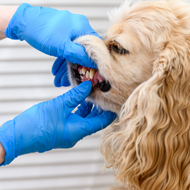Assessment reveals ‘high’ likelihood infected dogs will enter country.
The UK government has released a qualitative risk assessment of the likelihood of Brucella canis (B. canis) entering Great Britain.
Its analysis examined how the global movement of dogs could lead to dogs and foxes in the country becoming infected with brucellosis.
The risk assessment concluded that there was high annual likelihood of at least one infected dog entering Great Britain from many other countries. However this likelihood varied depending on the country of origin.
For example the likelihood of an infected dog travelling in from New Zealand and Australia, either by commercial route or on a short visit, was deemed to be very low.
From all other countries, however, the risk of an infected dog entering Great Britain through a commercial route was considered high. Similarly, the government assessed that all countries outside of Western Europe, except New Zealand and Australia, had a medium risk of allowing an infected dog to travel to Great Britain for a short visit.
Where B. canis did enter Great Britain, the government believes the likelihood of further cases to be high for breeding animals and low for all other dogs. However, the transmission risk to a naive dog in Great Britain was assessed to be high if they are the offspring of an infected dog, and medium for the breeding mates of an infected dog.
The government says that there remains a high degree of uncertainty throughout the risk assessment due to a lack of reliable data.
Evidence gaps included limited understanding of B. canis prevalence in other individual countries, infected dogs’ country of origin, and the frequency of which native dogs would mate with infected dogs. There was also uncertainty about transmission between wildlife and domestic dogs.
The full risk assessment can be viewed here.
Image used under license from Shutterstock, Inc.
Copyright (C) Chris worldwide/Shutterstock.com



 The WSAVA has invited veterinary professionals to a webinar on responsible antibiotic usage in dentistry.
The WSAVA has invited veterinary professionals to a webinar on responsible antibiotic usage in dentistry.